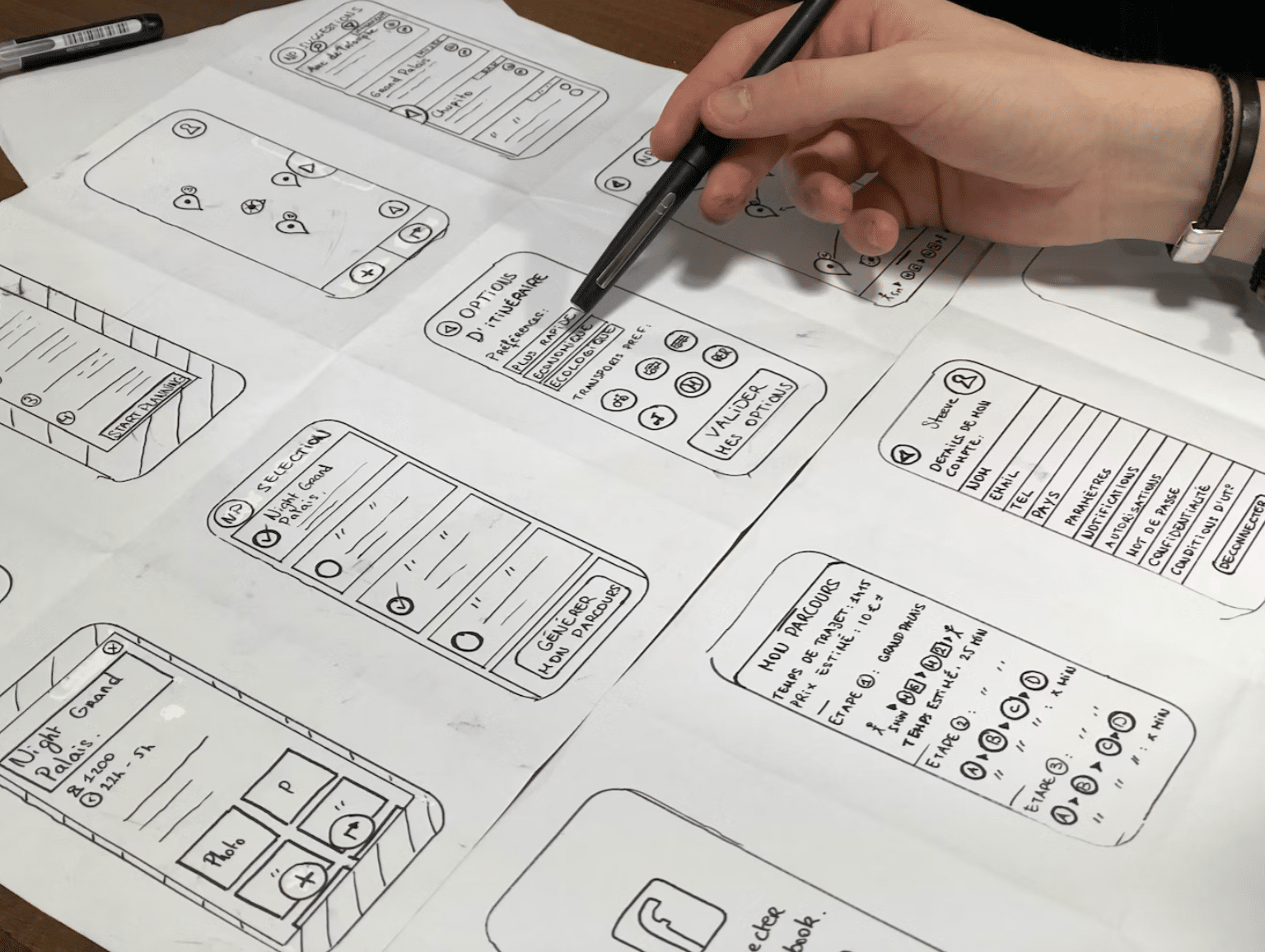Fundamental UX Design Principles to Use
UX principles are the foundation for creating user-friendly, intuitive, and engaging digital products. This knowledge helps you design interfaces that meet user needs, enhance usability, and provide a positive experience, leading to higher user satisfaction and retention.
Due to this, we share with you a text that explores key aspects of UX design, offering practical insights to help you create enjoyable user experiences.
This article highlights:
- the importance of user needs, usability, and intuitive interfaces
- how UX design is about creating engaging experiences
- key aspects of UX design

It’s the difference between a user who is engaged and a user who clicks away. But what exactly is UX, and why is it so important in design? This article will delve into the principles of user experience design, highlighting the importance of understanding user needs, usability, and creating intuitive interfaces.
What is UX Design User Experience Design (UX)
User experience design, often referred to as UXD or UX, is a multifaceted approach that focuses on creating products that provide meaningful and relevant experiences to users. It involves the design of the entire process of acquiring and integrating the product, including aspects of branding, design, usability, and function.
UXD goes beyond aesthetics and functionality; it’s about creating a seamless journey that resonates with the user’s emotions and needs. It considers every touchpoint and interaction, ensuring that the product aligns with the user’s expectations and enhances overall satisfaction.
The Core UX Design Principles
Understanding User Needs and Goals
Understanding the user is the cornerstone of UX design. This involves a comprehensive analysis of the user’s needs, goals, abilities, limitations, and context. By empathizing with the user, designers can create products that are truly tailored to individual needs. This requires:
- Extensive research, including interviews, surveys, and observations
- Creating user personas to represent different user types
- Mapping user journeys to understand the user’s path
- Identifying pain points and opportunities for improvement
Usability and User-Centered Design
Usability is a critical aspect of UX design, emphasizing the ease of use and efficiency of a product. It’s not just about making things look good; it’s about making them work well for the user. User-centered design is an approach that actively involves the user throughout the design process.
This collaborative approach ensures that the product is designed with the user’s needs, goals, and feedback in mind. It involves iterative design processes, continuous testing, and accessibility considerations to create a product that is intuitive, efficient, and inclusive for all users.
Visual Hierarchy and Information Architecture
Visual hierarchy and information architecture play vital roles in guiding the user’s attention and understanding. Visual hierarchy uses design elements like color, size, and placement to create a flow that guides the user’s eye through the content. Information architecture, on the other hand, focuses on organizing and structuring information in a logical and user-friendly way.
Together, they create a cohesive and intuitive navigation experience, making it easier for users to find what they need and interact with the content effectively. This includes creating clear navigation paths, using typography strategically, designing layouts that facilitate scanning, and implementing search and filtering options.
Enhancing User Engagement and Delight
UX design goes beyond usability; it aims to delight and engage the user. This involves:
- Utilizing storytelling to create emotional connections
- Incorporating gamification elements to increase engagement
- Designing micro-interactions that provide feedback and reward
- Creating visually appealing aesthetics that resonate with the user’s preferences
These strategies add a layer of personality and excitement to the user experience, turning ordinary interactions into memorable moments. Whether it’s a playful animation, a rewarding feedback loop, or a visually stunning layout, these elements contribute to a richer and more immersive user experience.
By focusing on understanding the user, ensuring usability, creating a visual hierarchy, and enhancing engagement, UX design creates products that are not only functional but also delightful. It’s a dynamic and evolving field that continues to shape the way we interact with products and services in our daily lives.
Frequently Asked Questions on UX Design
UX design consistency is crucial because it makes products easier to use, meets user needs effectively, and enhances the overall user experience. Consistent design helps users navigate intuitively, leading to greater satisfaction and engagement.
UI and UX are both crucial to a product's success, but they serve different purposes. UI design is about how the product's interfaces look and function, while UX design is about the overall experience a user has with a product.
While UX design does not typically involve coding, understanding the basics of coding can be beneficial for UX designers. It can help them understand the possibilities and limitations of the technology they are designing for and communicate more effectively with developers.
A real-life example of UX design could be a mobile app. The UX design of the app would involve understanding the user's needs and goals, designing intuitive and easy-to-use interfaces, conducting user testing, and iterating on the design based on user feedback.





